Entry Database : PDB / ID : 1mk2Title SMAD3 SBD complex Madh-interacting protein SMAD 3 Keywords / / / Function / homology Function Domain/homology Component
/ / / / / / / / / / / / / / / / / / / / / / / / / / / / / / / / / / / / / / / / / / / / / / / / / / / / / / / / / / / / / / / / / / / / / / / / / / / / / / / / / / / / / / / / / / / / / / / / / / / / / / / / / / / / / / / / / / / / / / / / / / / / / / / / / / / / / / / / / / / / / / / / / / / / Biological species Homo sapiens (human)Method / / / Resolution : 2.74 Å Authors Qin, B.Y. / Lam, S.S. / Correia, J.J. / Lin, K. Journal : Genes Dev. / Year : 2002Title : Smad3 allostery links TGF-beta receptor kinase activation to transcriptional controlAuthors : Qin, B.Y. / Lam, S.S. / Correia, J.J. / Lin, K. History Deposition Aug 28, 2002 Deposition site / Processing site Revision 1.0 Oct 16, 2002 Provider / Type Revision 1.1 Apr 28, 2008 Group Revision 1.2 Jul 13, 2011 Group / Version format complianceRevision 1.3 Feb 14, 2024 Group / Database references / Derived calculationsCategory chem_comp_atom / chem_comp_bond ... chem_comp_atom / chem_comp_bond / database_2 / struct_site Item _database_2.pdbx_DOI / _database_2.pdbx_database_accession ... _database_2.pdbx_DOI / _database_2.pdbx_database_accession / _struct_site.pdbx_auth_asym_id / _struct_site.pdbx_auth_comp_id / _struct_site.pdbx_auth_seq_id
Show all Show less
 Open data
Open data Basic information
Basic information Components
Components Keywords
Keywords Function and homology information
Function and homology information Homo sapiens (human)
Homo sapiens (human) X-RAY DIFFRACTION /
X-RAY DIFFRACTION /  SYNCHROTRON /
SYNCHROTRON /  MOLECULAR REPLACEMENT / Resolution: 2.74 Å
MOLECULAR REPLACEMENT / Resolution: 2.74 Å  Authors
Authors Citation
Citation Journal: Genes Dev. / Year: 2002
Journal: Genes Dev. / Year: 2002 Structure visualization
Structure visualization Molmil
Molmil Jmol/JSmol
Jmol/JSmol Downloads & links
Downloads & links Download
Download 1mk2.cif.gz
1mk2.cif.gz PDBx/mmCIF format
PDBx/mmCIF format pdb1mk2.ent.gz
pdb1mk2.ent.gz PDB format
PDB format 1mk2.json.gz
1mk2.json.gz PDBx/mmJSON format
PDBx/mmJSON format Other downloads
Other downloads 1mk2_validation.pdf.gz
1mk2_validation.pdf.gz wwPDB validaton report
wwPDB validaton report 1mk2_full_validation.pdf.gz
1mk2_full_validation.pdf.gz 1mk2_validation.xml.gz
1mk2_validation.xml.gz 1mk2_validation.cif.gz
1mk2_validation.cif.gz https://data.pdbj.org/pub/pdb/validation_reports/mk/1mk2
https://data.pdbj.org/pub/pdb/validation_reports/mk/1mk2 ftp://data.pdbj.org/pub/pdb/validation_reports/mk/1mk2
ftp://data.pdbj.org/pub/pdb/validation_reports/mk/1mk2 Links
Links Assembly
Assembly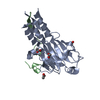
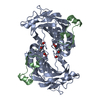
 Components
Components Homo sapiens (human) / Production host:
Homo sapiens (human) / Production host: 
 Homo sapiens (human) / Production host:
Homo sapiens (human) / Production host: 
 X-RAY DIFFRACTION / Number of used crystals: 2
X-RAY DIFFRACTION / Number of used crystals: 2  Sample preparation
Sample preparation Processing
Processing MOLECULAR REPLACEMENT / Resolution: 2.74→43.44 Å / Rfactor Rfree error: 0.014 / Isotropic thermal model: RESTRAINED / Cross valid method: THROUGHOUT / σ(F): 0 / Stereochemistry target values: Engh & Huber
MOLECULAR REPLACEMENT / Resolution: 2.74→43.44 Å / Rfactor Rfree error: 0.014 / Isotropic thermal model: RESTRAINED / Cross valid method: THROUGHOUT / σ(F): 0 / Stereochemistry target values: Engh & Huber Movie
Movie Controller
Controller




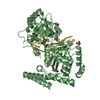

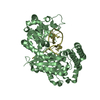
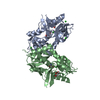
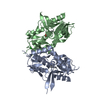
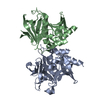




 PDBj
PDBj


























